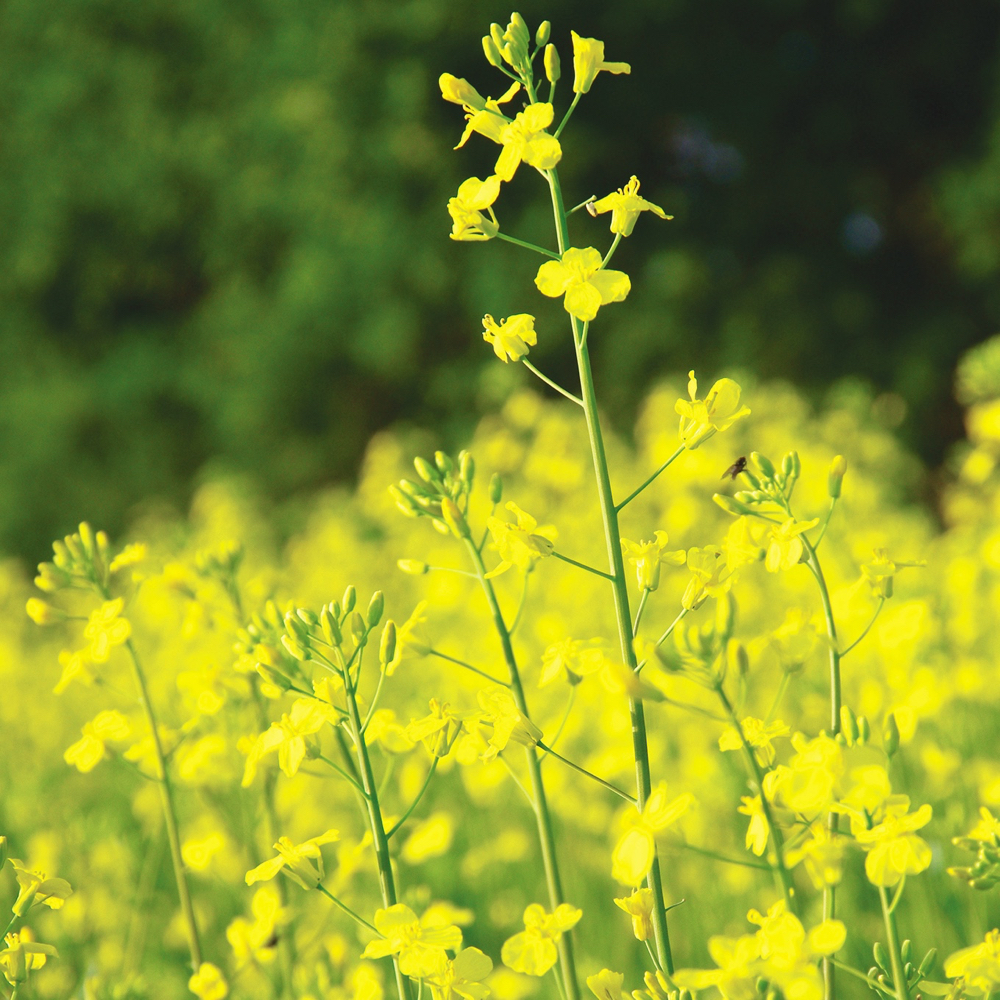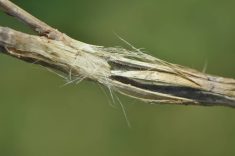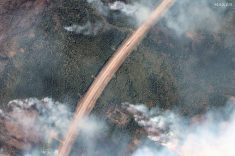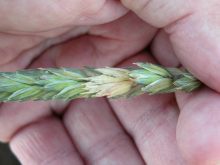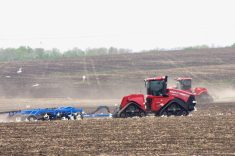Producers are scratching their heads on sclerotinia spray this year.
On one hand, the weather has been dry for most of the growing season. Much of agricultural Manitoba still sat at around two-thirds or less of normal rainfall as of June 25, according to Manitoba Agriculture, despite a series of rains since late May. The driest regions still reported a third of their normal rain as of July 1 and the Interlake saw less than 20 millimetres of rain between the start of May and June 9, not exactly prime environment for a fungus that requires a week of wet soil for fruiting bodies to germinate.
Read Also

Manitoba sclerotinia picture mixed for 2025
Variations in weather and crop development in this year’s Manitoba canola fields make blanket sclerotinia outlooks hard to pin down
At the same time, rains have hit in some areas with enough time for apothecia to germinate before canola hits the 20 to 50 per cent flower stage, usually tagged as ideal for spraying. Boissevain, for example, reported well over 40 millimetres in late May, sporadic rains through the first part of June, and another rainfall over 20 millimetres June 29.
Why it matters: The timing of recent rains, the first of the season for some areas, have producers weighing the risk on sclerotinia, but some of those fields are patchy and the profit margin is already shrinking.
The disease may be hit and miss this year, according to the Canola Council of Canada. Justine Cornelsen, agronomist with the council, says there are few blanket recommendations she can make this year. The extremely dry spring did keep risk low for many farmers, she said. At the same time, spotty thunderstorms since late May have put the disease back on the radar for anyone who has been hit by moisture.
“It kind of really comes down to field for field and if you’re willing to pay for that application or not, because we do have some pretty patchy-looking canola fields,” she said.
Walk the field
She herself still ascribes to the “wet pants” test, a rough determination of risk depending on if there is enough moisture to wet the farmer’s lower legs in the morning or late afternoon. The province has been humid some days this year, she added, but the weather has not been typical.
“Patchy canola stands mean that there’s going to be some air moving through the canopy drying it down a little bit,” she also said, something that makes the field environment less friendly for the fungus.

Cornelsen urged producers to scout old canola stubble for the mushroom-like fruiting bodies. The count of T-shaped apothecia does not necessarily translate to disease risk, she said, and there is no economic threshold for apothecia.
Keith Paetkau of Art’s Air Service in Winkler says demand for aerial sclerotinia spray has been roughly normal.
“There’s spotty showers all around,” he said. “The areas that are receiving rain, those guys are applying. Other areas where it’s been a little drier, guys are holding off.”
The Morden and Winkler area is among the few spraying for the disease, provincial staff said during a Crop Talk webinar last week.
Take the test
This year’s variability may make it ideal to explore new spore load tests, Cornelsen said.
“Most of them work by catching natural spores in the field, but we don’t have a set threshold of, yes, you should spray or not — what that infection would look like. It’s just sort of an indicator that the disease is there,” she said.
A number of such spore tests have hit the market in recent years. The Spornado spore catcher, launched by Alberta’s 20/20 Seed Labs, is a self-described “weather vane with a funnel in front,” outfitted with filters to catch spores within the funnel and primarily targeted towards sclerotinia and fusarium head blight.
Another test out of Quantum Genetics in Saskatoon detects spore load from petals. The test, which retails for $480 a kit, rates risk as “low” if 20 per cent or less of submitted petals show the presence of the fungus, according to the company’s website. If 40 per cent or more show the fungus, the company suggests a high risk that yield loss from sclerotinia will outweigh the cost of spray.
Biosensors out of Alberta have made a similar buzz. The technology out of Alberta Innovates made headlines two years ago for its promise of a biosensor chip that could measure sclerotinia pressure in real time and send an alert to the farmer when pressure merited a spray pass.
Zone spray may also be a benefit this year, given the diversity within the field, Cornelsen added. Precision spray tools could be used to spray only the denser areas, and therefore areas most at risk, within the field.






